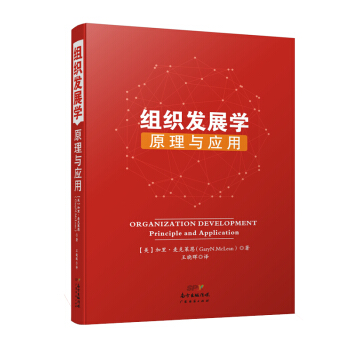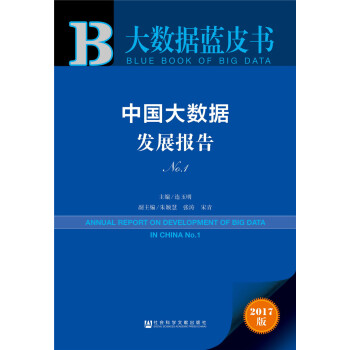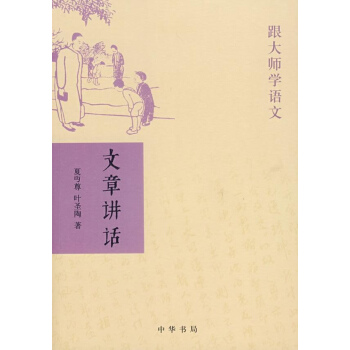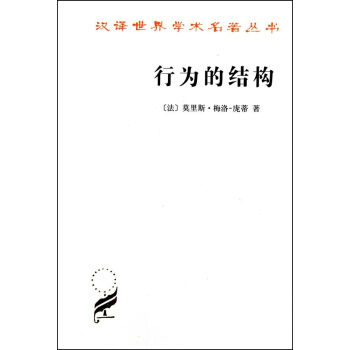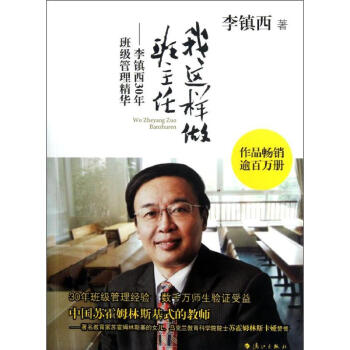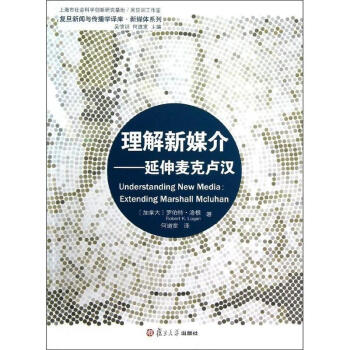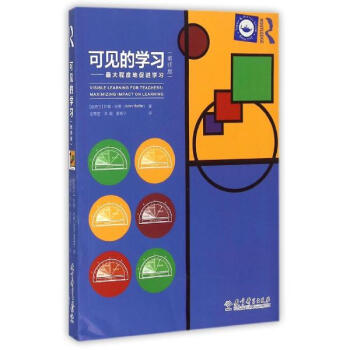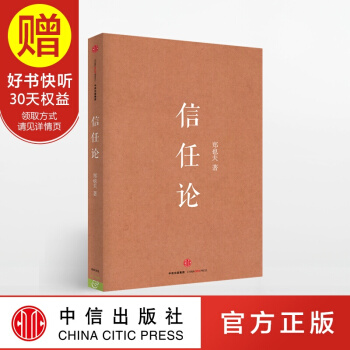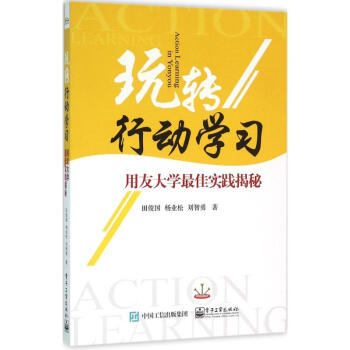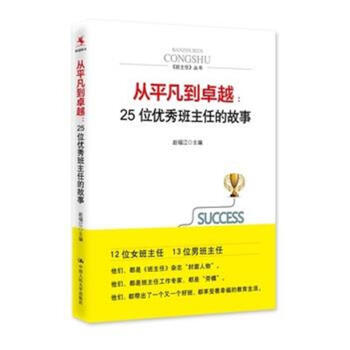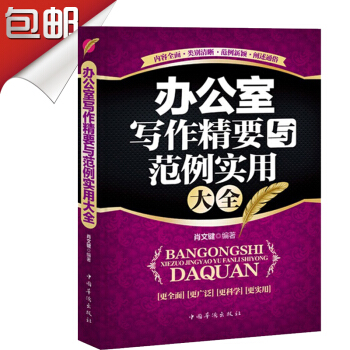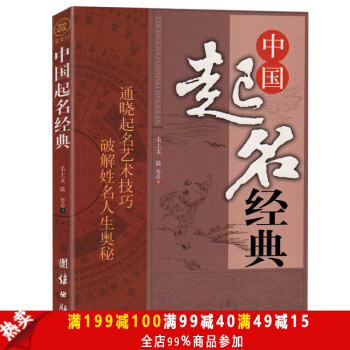

具体描述
内容简介
自2008年以来,中国经济中的“人口红利”消耗殆尽,每年8%以上增速的“中国奇迹”风光不再。未来15-20年,中国经济能否保持中高速增长?通过调整人口政策,能给经济增长带来哪些新动力?本书以独特的视角,从研究中国经济发展的“人口因素”入手,借鉴世界各国经验教训,揭示了中国经济下行的深层次原因,提出了中国人口政策方面的“生育管制”和“流动管制”带来的各种不利经济增长的后果,为各级政府制定促进经济增长的经济政策与改革方案,提供了一条崭新的思路。作者简介
周天勇,经济学博士,教授,中共中央党校国际战略研究所副所长,中共中央党校校委研究室副主任,北京科技大学博士生导师。社会兼职有:中国城市发展研究会副理事长兼城市研究所所长,国家行政学院、北京科技大学、东北财政大学、中国社会科学院研究生院等教授,国家发改委价格咨询专家。研究领域为社会主义经济理论、宏观经济、经济发展和增长、劳动经济、中小企业、金融风险、城市化、国企改革、农业经济等。在上海三联出版社、经济科学出版社和中共中央党校出版社出版有《劳动与经济增长》、《效率与供给经济学》、《金融风险与资本社会化》、《中国经济命运与前景的深层次思考》、《新发展经济学》、《中国政治体制改革》、《国有企业改革攻坚》、《现代国有资产管理体系模式》、《走出决策的经济误区》、《走出发展的体制障碍》、《中国:经济运行与结构转换》和研究生用《高级发展经济学》等专著和教材。
近年来就国家整体负债、公平与效率、政府各部门收费、财政体制、官民供养比、水电开发、中国增长的危机等方面发表的文章,引起了各方面的高度关注。
王元地,男,四川大学教授,中共党员。2012年以“人文社科青年百人计划”引进人才进入四川大学工作,聘为副研究员,2014年破格聘为博士生指导教师,并担任四川大学创新与创业管理研究所常务副所长,入选四川省学术和技术带头人后备人选,2015年破格晋升教授。研究方向为:技术许可和交易、知识产权保护、企业创新国际化和后发国家技术追赶。作品有:《中国自主创新政策评价研究》(独著)、《中国区域创新体系发展的理论与实践》(合著)、《现代企业理论》(联合主编)、《战略管理理论与实践》(主编)等。
目录
第1部分中国经济学界的未解之谜1问题的起因/00
1.1中国奇迹:经济高速增长30年/00
1.1.1经济实力快速增长/00
1.1.2从农业经济社会向现代工业社会的转型/00
1.1.3对外贸易的“引进来”和“走出去”/00
1.1.4人民生活从温饱到小康/0
1.2中国经济高速增长的成因/0
1.2.1高生育率积蓄了大规模的剩余劳动力/0
1.2.2剩余劳动力优势成功嵌入全球产业链/0
1.2.3经济主力人口的创业创新动力/0
1.32008年经济增速开始下行/0
1.3.1工业生产转入了全面过剩/0
1.3.2消费、投资增速下行和突然放缓/0
1.3.3传统的出口优势逐步趋弱并已消失殆尽/0
2经济下行的“两家争鸣”与质疑/0
2.1经济本不应进入中速增长阶段/0
2.1.1“中速增长常态论”的逻辑推理和政策主张/0
2.1.2对“中速增长常态论”的商榷/0
2.2经济下行不是外因所致/0
2.2.1“增速下行外因论”的逻辑推理和政策主张/0
2.2.2对“增速下行外因论”的商榷/0
第2部分学术争论与历史演变
3人口与发展:理论述评与事实/0
3.1人口与经济关系理论的回顾与评述/0
3.1.1适度人口论与人口控制主张/0
3.1.2《增长的极限》与人口资源悲观论/0
3.1.3市场机制调控家庭生育决策的基本过程/0
3.1.4人口流动与经济增长关系的研究述评/0
3.2人口增长与工业化发展/0
3.2.1人口增长是工业化的必要条件/0
3.2.2人口增长方式转型也是工业化的产物/0
3.3人口流动、城市化及工业化发展/0
3.3.1人口流动加速城市化的进程/0
3.3.2城市化与工业化发展的互动/0
3.4人口、工业化与生态环境的动态协调发展/0
3.4.1人口增长与资源的协调发展/0
3.4.2人口、工业化与环境的协调发展/0
3.4.3人口、工业化与生态环境的动态发展/0
4生育权与迁移权/0
4.1生育权与迁移权的界定/0
4.1.1生育权在个人和国家间的归属之争/0
4.1.2迁移权在个人与国家间不同的安排/0
4.2 生育权的经济学分析/
4.2.1生育权的经济学解释/
4.2.2生育权行使的经济学探讨/
4.3 迁移权的经济学分析/
4.3.1迁移权的经济学解释/
4.3.2迁移权行使的经济学探讨/
5 世界经验:基于不同生育权和迁移权的配置/
5.1 基于不同生育权配置的国际经验/
5.1.1美国不干预的生育及经济发展/
5.1.2日本指导性计划生育与经济的先富后低/
5.1.3韩国指导性计划生育历程/
5.1.4中国台湾地区的指导性计划生育/
5.1.5计划生育政策在印度的流产 /
5.1.6不同生育权配置的国际经验总结/
5.2 基于不同迁移权配置的国际经验/
5.2.1美国的人口迁移自由/
5.2.2日本的人口迁移和住民登记/
5.2.3法国的迁移自由和流动人口管理/
5.2.4俄罗斯人口迁移及其低流动性/
5.2.5印度的人口迁移与贫民窟的形成/
5.2.6不同迁移权配置的国际经验总结/
第3部分中国人口生育管制的经济后果
6 “人口坑”与经济增长的陷阱/
6.1 “人口坑”深浅与经济高增长时间的长短/
6.1.1工业化阶段的“人口坑”与经济增长速度/
6.1.2中国“人口坑”与经济增长速度放慢/
6.2 人口增长变动对经济增长速度的影响/
6.2.1即期影响:人口增长对经济增长的影响/
6.2.2长期影响:人口变动的20年延期影响定理/
7 人口结构失衡和老龄化的经济后果/
7.1 人口结构与经济排浪式变动及增长波动/
7.1.1人口变动与消费、投资和出口变动的数理关系/
7.1.2人口变动引致国民经济排浪式衰退/
7.2 未来经济长期承受的下行和老龄化压力/
7.2.1国民经济未来长期面临的下行压力/
7.2.2未来老龄化加剧的诸多难题/
第4部分中国人口流动管制的经济后果
8 人口进入城市和退出农村的障碍和问题/
8.1 流动人口市民化的进入障碍/
8.1.1中国户籍管理制度变迁与人口流动/
8.1.2社会保障与公共服务的不公平/
8.2进城农民工人口的农村财产退出障碍/
8.2.1农民理性经济人与退出资产障碍和机会成本/
8.2.2出租退出困境与其他退出方式比较/
8.2.3农地制度复杂性与建设征用为国有之弊/
9 城市化流程的扭曲和消费塌陷/
9.1 “青出老回”与漂泊于城市/
9.1.1人口城乡钟摆式和不同地频繁流动/
9.1.2人口从农村到城市的“青出老回”/
9.1.3不返乡的农民工人口在城市中漂泊/
9.1.4大多数国家能够市民化的城市化/
9.2城市消费抑制和农村消费塌陷/
9.2.1流动人口干预制度下的城市消费抑制/
9.2.2“青出老回”流程与农村消费塌陷/
结束语/
参考文献/
PART ONEThe Unsolved Mystery in China’s Economic Community
1Origin of the Problem/ 00
1.1Chinese Miracle: The 30 Years of High Economic Growth Rate/ 00
1.1.1Rapid Growth of Economic Strength/ 00
1.1.2Transition from Agricultural Economy to Modern
Industrial Economy/ 00
1.1.3“Bringing In” and “Going Out” of International Trade/ 00
1.1.4From Subsistence to Moderate Prosperity/ 0
1.2The Reasons of China’s High Economic Growth/ 0
1.2.1High Fertility Rate Saving Huge Surplus Labor/ 0
1.2.2Successfully Integrating Surplus Labor Advantage into
Global Industrial Chain/ 0
1.2.3Entrepreneurship and Innovation by Population as Major
Economic Force/ 0
1.3The Slowdown of Economic Growth Since 2008/ 0
1.3.1Industrial Product Turning into Overall Surplus/ 0
1.3.2Downturn and an Abrupt Slowdown of
Consumption and Investment/ 0
1.3.3Traditional Export Advantage Exhausting Gradually/ 0
2Two Theories of Economic Downturn and Doubts/ 0
2.1The Economy Should Not Enter Intermediate Speed of Growth/ 0
2.1.1The Logic and Policy View of “Medium
Growth as Normal”/ 0
2.1.2Discussion over “Medium Growth as Normal”/ 0
2.2Economic Downturn Is Not Caused by External Factors/ 0
2.2.1The Logic and Policy View of “External Causes of
Economic Downturn”/ 0
2.2.2Discussion over “External Causes of
Economic Downturn”/ 0
Contents
PART TWOAcademic Debate and Historical Evolution
3Population and Development: Theoretical Review and Facts/ 0
3.1The Review and Discussion of the Relationship Theory of
Population and Economy/ 0
3.1.1Moderate Population Theory and Its View of Birth Control/ 0
3.1.2“The Limits to Growth” and Pessimistic View of Population
and Resources/ 0
3.1.3Basic Process of Family Planning under Market Mechanism/ 0
3.1.4Reviews of Literature on Population Mobility
and Economic Growth/ 0
3.2Population Growth and Industrial Development/ 0
3.2.1Population Growth as Necessity of Industrialization/ 0
3.2.2Transition of Population Growth as Outcome
of Industrialization/ 0
3.3Population Flow, Urbanization and Industrial Development/ 0
3.3.1Population Mobility Speeding up Urbanization Process/ 0
3.3.2Interactions between Urbanization and Industrialization/ 0
3.4The Dynamic and Coordinated Development of Population,
Industrialization and Ecological Environment/ 0
3.4.1Harmonious Development between Population
Growth and Resources/ 0
3.4.2Harmonious Development among Population Growth,
Industrialization and Ecological Environment/ 0
3.4.3Dynamic Development among Population Growth,
Industrialization and Ecological Environment/ 0
4Reproductive Right and Migration Right/ 0
4.1The Definition of Reproductive Right and Migration Right/ 0
4.1.1Dispute over ownership of Reproductive Right between Family
and Government/ 0
4.1.2Different Arrangement of Migration Right between Family
and Government/ 0
4.2The Economic Analysis of Birth Rate/
4.2.1Economic Explanation of Reproductive Right/
4.2.2Economic Discussion over Exercise of Reproductive Right/
4.3The Economic Analysis of Migration Right/
4.3.1Economic Explanation of Migration Right/
4.3.2Economic Discussion over Exercise of Migration Right/
5Experience in the World: The Distribution Based on Different
Reproductive Right and Migration Right/
5.1The International Experience Based on Different Reproductive Right/
5.1.1Nonintervention Experience of the United States/
5.1.2Instructive Birth Control in Japan and Its
Economic Up and Down/
5.1.3History of Instructive Birth Control in Korea/
5.1.4Instructive Birth Control in Taiwan/
5.1.5Miscarriage of Birth Control in India/
5.1.6International Experience of Different Arrangement of
Reproductive Right/
5.2The International Experience Based on Different Migration Right/
5.2.1Free Migration of Population in the United States/
5.2.2Reproductive Right and Residential Registration in Japan/
5.2.3Free Migration of Population and Floating Population
Management in France/
5.2.4Migration of Population and Low Mobility in Russia/
5.2.5Migration of Population and Formation of
Slum Problem in India/
5.2.6International Experience of Different Arrangement of Migration
of Population/
PART THREEThe Economic Consequence of China’s Population
Planning System
6“Population Pit” and the Trap of Economic Growth/
6.1The Depth of “Population Pit” and The Time Length of High
Economic Growth/
6.1.1“Population Pit” at Industrialization Stage
and Economic Growth/
6.1.2“Population Pit” and Economic Slowdown in China/
6.2The Influence of the Change of Population Growth on Economic
Growth Rate/
6.2.1Immediate Influence: Population Growth over
Economic Growth/
6.2.2Long-term Influence: Theory of 20-year Delay Effect of
Population Growth/
7The Economic Consequence of Unbalanced and Aging
Population Structure/
7.1Population Structure, Huge Economic Change and the Fluctuation
of Increase/
7.1.1Arithmetical Relationship between Population Structure and
Consumption, Investment and Export Fluctuation/
7.1.2Population Change Leads to National Economic
Downturn as Waves/
7.2The Downward and Aging Pressure on Economy in the Future/
7.2.1Long-term Economic Downward Pressure of
National Economy/
7.2.2Numerous Difficulties from Aggravating Population Aging/
。。。
精彩书摘
5.1.6不同生育权配置的国际经验总结从以上对世界不同国家实行的生育政策及社会经济后果分析来看,无论是实行了指导性计划生育政策还是因为历史原因导致的人口减少,对一个国家人口增长及社会经济的深层次负面影响都是巨大而长远的。
首先,人口生育率降低到世代更替水平以下后,很难在短期内通过鼓励和刺激生育的政策得以恢复。比如日本,人口生育率从1949年的4.3降到1960年的2,只用了10多年的时间;从1970年开始停止对人口生育的管制,人口生育率在40多年也未恢复到2,2015年总体生育率也只有1.4。而印度因为文化、宗教等复杂因素对人口计划生育的抵制,至今人口生育率仍高于世代更替水平,2013年为2.48。
其次,人口的长期萎缩会危及种族延续和国家安全。比如日本,2013年人口约为1.27亿,预计到2060年,日本人口大概减少为0.86亿。联合国世界人口展望方案显示,到2100年,日本人口在世界人口中的占比将从2013年的1.76%降到0.9%,人口只减不增,逐渐衰落直至消失。
最后,最显著也最重要的是,人口的减少将会直接影响国家经济的增长。人口不断减少,使得日本、韩国和中国台湾等国家和地区在后工业时代失去了经济持续增长的动力,表现出下行、老态及疲软等不良反应,与后发新兴经济体印度相比,缺乏劳动力和创造力的优势。据世界银行发布的统计数据显示,2014—2015年,日本GDP增长率分别为-0.1%和0.4%,韩国的经济增长为3.3%和2.6%。中国台湾地区的经济增长在2008年后经常“保1争2”,甚至一度负增长,2015年经济增长为0.85%。印度近乎失败的人口生育控制并没有造成人口的快速下降,使得印度的经济增长具备了重要的人口优势。印度近年来的经济增长一直保持在5%以上的水平,2015年更是高达7.6%,首超中国并领跑全球,成为全球经济增长最快的大型经济体。实行指导性计划生育政策的国家和地区,如日本、韩国及中国台湾地区,均呈现明显的“先富后老”特征,这些国家和地区在人口兴盛时期完成了工业化,但在后工业时代却面临着人口萎缩和经济低迷的压力;印度则由于具备人口优势在未来的经济发展中具有相当大的潜力。
5.2基于不同迁移权配置的国际经验
目前,大多数国家的宪法及法律都赋予了公民自由迁移的权利,但仍有部分国家不同程度地将迁移权收归国家所有。总的来看,国家宪法赋予了公民迁移自由的权利,但从经济学的角度分析,国家的管理体制限制了公民的迁移自由,在市场经济体制下必将影响城市化进程。这里我们主要分析国际上的两种迁移权配置方式:第一种配置方式,包括美国、日本和法国等在内的国家,其健全的社会保障体系完全保证了公民的迁移自由,这些国家公民的迁移自由权在法律和经济学层面均归属个人支配。第二种配置方式,包括俄罗斯、印度等在内的国家因社会保障体系、种族歧视及城市化建设不足等因素,公民的自由迁移权利受到国家的干预,尽管在法律层面迁移权归公民个人支配,但在经济学层面迁移权却受到国家的“半管制”。本节通过梳理世界不同国家的人口迁移权配置方式,分析各配置方式对城市化进程、经济发展产生的影响,并从中总结经验。
5.2.1美国的人口迁移自由
美国法律和历年法院判例赋予了公民自由迁移的基本权利,还保障了公民在各州享受的优惠、平等和豁免权。在美国,与迁徙权相配套的各项权利受宪法保护的依据是“优惠与豁免条款”
《美国联邦宪法》第4章第2节规定:“每个州的公民均享有诸州公民所有优惠和豁免权。”《美国联邦宪法》第14修正案规定:“所有在合众国出生或者入籍、并受制于其管辖权的人,都是合众国和其居住州的公民。任何州不得制订或者实施任何法律,来剥夺合众国公民的优惠和豁免权利。”
和“平等保护条款”
平等保护条款规定:“各州不得在其管辖区域内,对任何人拒绝提供法律的平等保护。”
。根据这两个条款,迁移、流动人口有权享受流入地州政府提供的各项服务保障,而且新迁入的居民与本州居民享受同等待遇,流入地政府有责任保障新迁入本地居民的各项权利(曹淑江,2007)。美国公民自由随意的州际迁徙没有造成美国社会秩序的紊乱,这得益于社会保障号(Social Security Number,SSN)制度的管理。1935年,美国政府为维持美国工人阶级的生活稳定,推出了《社会保障法》(该法案最初名为《经济保障法案》),这一法案被“新政”后的美国各届政府不断修正和完善,从而构成了美国现代社会保障制度的基础。每个合法的美国公民都有一个社会保障卡,且社会保障号伴随一个人从出生到死亡,美国人每到一个地方就要到社会保障机构办理住所变更手续,以保证在该地享受各项权利。联邦当局能根据迁移人口的住宿变更情况进行信息追踪,了解、掌握、查询、统计全国人口的迁移情况。社会保障号信息系统随时记录美国人口的迁移、流动、工作变动、收入变化以及缴纳税费等情况。各地区、各行业以及各部门都能通过社会保障号查询公民的个人情况,社会保障号就像一只“看不见的手”随时起着调节作用,保障美国的社会经济有条不紊地运行。
美国人口在全国范围内的自由流动促进了城市化的良性发展。得益于发达的铁路网、州际公路网,以及家用汽车的普及,美国人口在城乡、州际之间自由迁移。当前,美国是世界上城市化水平较高的国家之一,早在20世纪60年代,城市化率就达到了70%以上,2014年,城市化率高达81.5%
数据来源于世界银行数据库:城市发展指标,城镇人口(占总人口比例)http://data. worldbank.org.cn/indicator/SP.URB.TOTL.IN.ZS。
,显然这是人口自由流动的结果。鉴于美国政府对人口迁移和城市化的行政干预较少,美国的城市化进程基本都是依靠社会和市场的力量推动。美国人口迁移的方向在城市化的各阶段有所不同,在集中城市化阶段,人口主要从乡村迁移到城镇、小城镇迁移到大城市;在城市郊区化阶段,人口主要从城市迁移到郊区,形成大都市区。当前,美国的郊区化有效缓解了美国各中心城市人口密集、住房紧张、交通拥挤、环境污染等问题,改善了公民的城市生活质量。
5.2.2日本的人口迁移和住民登记
《日本国宪法》明确规定日本公民享有迁移自由的权利。
《日本国宪法》第3章国民的权利与义务中第22条明确规定公民具有居住、迁移及选择职业的自由,移住外国和脱离国籍的自由:“1.在不违反公共福利的范围内,任何人都有居住、迁移以及选择职业的自由。2.不得侵犯任何人移往国外或脱离国籍的自由。”资料来源:《日本国宪法》,日本国驻华大使馆,1946年11月3日公布,1947 年5月3日施行。
日本从1952年开始通过“住民登记制度”对迁移人口进行管理(新华,2003)。每个日本居民持有一张“住民票”,相当于户籍文本,它以每个居民的居住地为基础设立,记录个人姓名、出生日期、性别、当前住址等信息,以及个人居所变动、迁移、纳税等信息,它既是政府为个人提供公共服务的凭证,又是日本对迁移人口进行管理的制度。“住民票”完全跟随公民的住址而移动,国民在迁移到其他地方前,首先要带上新居住地的房屋租赁合同,到居住地区政府办理“住民票”迁出证明,注明迁出的原因和计划前往的地址。搬入新住址14日内要到新住地区政府办理迁入登记,居住地点的信息登记要求十分详细,这样就变更了原来的“户籍”材料,也就成为新迁入地的公民,并享受与当地居民同等待遇的子女教育、国民健康保险、公共设施利用及公共服务享受等社会福利。自2011年以来,日本又出台了“住民基本情况网络登记制度”,这是“住民登记制度”电子政务的一项重要举措。该制度要求迁移人口安顿下来后,1个月内到当地行政部门登录新居住地点,实现户籍材料的自然变更,显著提高了迁移人口管理效率。
何德功.日本居民身份管理便于人口流动[EB/OL].[2003-07-17].http://news.xinhuanet.com/world/2003-07/17/content_981062.htm.
“住民登记制度”是日本人口迁移和户籍管理中非常关键的环节,一方面,保证了日本人口迁移、流动的有序进行;另一方面,也加强了日本行政当局与居民的有效互动,即享受当地各种优惠政策与遵守当地的行政措施和法律,因为日本政府可以随时掌握公民的行踪。
世界各国的身份管理制度一瞥[EB/OL].[2003-07-25].http://old.chinacourt.org/html/article/200307/25/70628.shtml.
“住民登记制度”虽不具备调控城市化人口流向和流量的阀门功能,但能对迁移人口进行有序管理。目前,日本属于全球城市化水平较高的国家之一,2014年城市化率达到了93%,东京人口占日本总人口比例超过1/4。由于高度发达的城市化和工业化,并不存在大量低素质人口大规模涌入东京等大城市的现象。因此,日本有序的人口迁移管理依托于完备的“行政管理制度”和健全的“市场调节机制”有机结合,前者保证了对迁移人口管理的“疏而不漏”和“自由平等”,后者保证了流入大城市人口的“优胜劣汰”和人才资源的优化配置。
5.2.3法国的迁移自由和流动人口管理
1946年法国《新人权宣言》和1950年签订的《欧洲保障人权和根本自由公约》赋予法国公民迁徙自由的基本权利。
1950年11月4日签订于罗马的《欧洲保障人权和根本自由公约》(以下简称“公约”),第2条即是迁徙自由。公约具体规定为:1.合法地处于一国领土之内的每一个人都应当在该国领土之内享有迁徙自由和自由选择其居住地权利。2.每一个人均有权自由地离开任何国家,包括其所属国。3.对于这些权利的行使不得被施加任何限制,但根据法律施加的限制以及在一个民主的社会出于保护国家安全和公共安全、维护公共秩序、预防犯罪、保护健康或道德、保护他人的权利和自由的需要而施加的限制除外。4.第1款中所设定的那些权利也可以在个别领域中受制于一些按照法律而施加并基于民主社会的公共利益而正当化的合理的限制条件。资料来源:欧洲人权法院,《欧洲保障人权和根本自由公约》,
http://www.echr.coe.int/Documents/Convention_ZHO. pdf。
每个法国公民拥有个人户籍信息,包括姓名、性别、国籍、出生日期、出生地址、父母的职业、经济收入、宗教信仰、居住地址等个人信息。如果一个法国公民迁移至新居住地,只需要通知以前居住地的社会保险机构,将其个人户籍信息转到新住址所在地的相应社会保险机构即可,法国公民可以随意跨区域迁移而不受任何措施的限制。
美国法国日本户籍制度[EB/OL].[2005-11-28].http://news.xinhuanet.com/politics/2005-11/ 28/content_3846265.htm.
可见,法国流动人口的秩序是以其完善的社会保障体系为基础的。法国公民的医疗保险、失业救助等社会保险全国联网,每个公民对应一个社会保险号码,可以在全国范围内享受医疗保险、失业救助、住房补贴、看病就医、教育等一切社会福利。
迁移自由的前提是人口的自由流动,法国采取分类发放“流动证”制度对国内流动人口进行管理。需要办理“流动证”的群体主要是有工作但没有固定居所者、无家可归者以及罗姆人(吉卜赛人),每年的数量有30万~40万人。法国实行的“流动证”制度具有三个鲜明特点
美国法国芬兰巴西流动人口管理的经历与得失[EB/OL].[2012-02-07].http://finance. people.com.cn/GB/70846/17040165.html.
:第一,“流动证”制度具备法律支撑。法国法律规定,年满16岁且居无定所者必须办理流动证,有效期为5年,期满后必须到警察局办理延长手续。如果警察检查到符合条件而无法出示“流动证”,则面临惩罚甚至监禁。第二,“流动证”制度实行分类发放与管理。针对流动人口的“流动证”的发放、审核时间长短,法国根据流动者是否有固定居所、固定工作地点和固定收入而定,分为A、B、C、D四类。第三,“流动证”必须与市镇相关联。法国“流动证”的申领人必须同时申请同国内某个市镇相关联,形成绑定关系。关联有效期2年以上,之后可以更换关联市镇。在关联生效期内,“流动证”持有者必须在该市镇完成相应的义务并遵守法律,连续3年与一个市镇关联才拥有选举权。此外,一个市镇接纳“流动证”持有者不超过当地人口的3%。拥有“流动证”可让持证人享受法国公民的民事权利,以及关联市镇的选举、被选举权和司法援助等政治权利。该“流动证”管理制度不仅实现了对不同人员的分类管理,提高了流动人口服务管理的法律强制效力,而且从某种程度上控制了市镇的人口规模。
5.2.4俄罗斯人口迁移及其低流动性
根据《俄罗斯联邦宪法》,俄罗斯联邦每位公民不论男女都享有在俄罗斯联邦境内自由迁移、选择停留地和居住地的权利。
1993年12月12日由全民公决通过的《俄罗斯联邦宪法》第2章第27条规定:“1.合法地处于俄罗斯联邦境内的每个人都有自由迁徙、选择逗留和居住地点的权利。2.每个人都可以自由地离开俄罗斯联邦国境。俄罗斯联邦公民有不受阻碍地返回俄罗斯联邦的权利。”资料来源:《俄罗斯联邦宪法》,中俄法律网,http://www.chinaruslaw.com/CN/InvestRu/Law/2005531140842_6715509.htm。
公民的迁徙行为无须经过地方政府审批,只需进行合法的迁出、迁入登记即可(Schaible,2001)。1995年,俄罗斯联邦政府根据法令正式颁布具体的执行方案,规定公民迁移到一个地方,非当地户口的本国和外国居民在3天之内必须办理户籍登记,接受俄罗斯移民局、警察局和安全局的备案(Rubins,1998)。俄罗斯联邦政府虽强调和维护公民的自由迁徙权,但由于缺少对国内迁移人口的实际性管理,导致在莫斯科、圣彼得堡这类大城市存在对外来迁移人口的隐性限制。俄罗斯联邦当前对国内迁移人口的政策性管理文件主要是“俄罗斯联邦移民管理纲要”,该文件力求优化国内人口流动,促进劳动力资源的有效利用。尽管俄罗斯联邦宪法及联邦立法对俄公民常住地选择上未设任何行政限制,但就国内移民管理而言,政策制定和执行仍显不足,护法机关实行的登记制度在一定程度上限制了劳动力的自由流动,甚至破坏了联邦公民自由迁移的权利(于小琴,2011)。对于莫斯科和圣彼得堡这样的大城市而言,受种族主义冲突背景下的治安压力、社会福利资源分配的压力、市场化在大城市居民中形成的对外来人口的竞争性心态,共同导致大城市对外来流动人口的自由迁居限制。为消除城市流动人口中存在的恐怖主义威胁,俄罗斯立法机构修改了涉及流动人口管理、移民、机动车过户、居住登记、交通工具安全管理等近30个法律法规,新法规针对人口流动的限制大大超过以往(周开颜,2013)。
由于联邦政府缺乏利用人口流动对劳动力市场进行平衡的管理意识,且对这一过程协调不足,甚至对毕业生的就业还实施了行政命令体系下的管理措施。因此,俄罗斯联邦部分行政因素对国内人口迁移的限制,导致国内人口流动不畅。这些限制性的行政因素主要包括:第一,人口的迁移借助官僚化的登记程序,登记手续过于烦琐,限制了外来流动人口的居住。目前俄罗斯对国内流动人口统计不足,临时劳动移民也未纳入登记体系。第二,大部分社会保障体系与公民常住地绑定,这限制了迁移人口获得迁入地社会保障的权利,包括医疗保健、退休及社会救助服务等。第三,大城市住房供给不足以及高昂的房价极大地抑制了公民的迁移,包括缺乏廉价公寓住房、贷款体系不健全以及收入水平较低等因素大大阻碍了人口的迁移。第四,人才市场及就业中介服务机构发展落后,就业信息不对称,很难促进人口的广泛流动。尽管俄罗斯联邦公民有自由迁移的权利,但由于受到各种行政管理制度的限制,致使各联邦跨地区的人口流动性较低。
5.2.5印度的人口迁移与贫民窟的形成
印度宪法赋予印度公民在国内自由迁移的权利,
1949年通过的《印度宪法》在“自由权”一节第19条第1款规定:“一切公民均享有下列权利:在印度领土内自由迁徙。”
但由于缺乏健全的制度对过亿人口的流动和迁移进行有效管理,导致了诸多社会问题。自1947年印度独立以来,印度公民没有唯一能标志印度公民的身份证,只能用选民证、工作证、驾照、护照、银行账户等证明身份的证件在特定的地方工作和居住,这就带来公民身份资料重叠的可能性,政府更无法对几亿规模的迁移人口进行有效管理。由农村迁移人口构成的城市贫民的快速增长,加上印度政府对贫民窟居民的社会保障、医疗服务、义务教育等供应能力有限,导致印度的城市化质量和城市运行管理效率低下。
印度政府对迁移人口的管理不善产生的社会问题体现在:首先,印度属于发展中大型经济体,地区间社会经济发展水平不均衡,导致落后地区的人口季节性和永久性地大规模向较发达地区迁移。每年印度终身迁移人口总量高达全国总人口的27.4%,农村作为人口迁移的发源地和目的地,共有70.5%的国内迁移人口来自农村,农村之间的迁移人口占总迁移人口的64.2%,大量迁移农村人口面临就业、居住、教育等问题,这些当前印度政府都还无法对其进行有效管理。其次,大规模的流动人口既无法回到农村重新被安置,又无法被城市正常吸纳,催生了快速增长的贫民窟。相较于凋敝的农村,城市虽能够为流动人口提供就业机会,但却无法提供正常的城市生活、社会福利及平等的学习和工作机会。为了满足最低程度的生存需求,大量流动人口只能选择废旧铁皮、油毛毡、塑料布和几根竹竿搭成的简陋窝棚作为安身之所。久而久之,越来越多的窝棚犬牙交错,开始向城市的空隙蔓延,逐渐形成规模惊人的贫民窟。就印度的贫民窟现状而言,印度政府在未来较长时间内可能都无法解决。
数据来源:世界银行数据库,http://data.worldbank.org.cn/indicator/all。
最后,住房建设速度赶不上贫民窟增长速度,城市化质量较低。在印度法律里,保障人的迁徙权和居住权比公私土地产权具有更优先的地位。由于印度法律的规定,一旦公民在一处住房居住满一年,则该公民就有优先购买这处住房的权利,以及相比于其他公民的无限期租住的优先权。这样就导致了私人出租房屋和建造出租房屋的供给减少。这种情况下,虽然印度政府计划为贫民窟的流动迁移人口提供住房,但目前的建设速度仍赶不上贫民窟人口的增长速度(刘培林,2010)。
5.2.6不同迁移权配置的国际经验总结
从以上对世界不同国家实行的迁移权配置方式分析来看,以美国、日本和法国为代表的国家迁移权完全归公民所有;像印度和俄罗斯等国家,其公民的迁移权受到国家的“半管制”。通过本节对不同国家人口迁移和流动管理的分析可见,公民的自由迁移和流动对国家的城市化进程及经济发展具有积极的推动作用;反之,如果公民的迁移自由受到国家制度的限制,则会阻碍甚至扭曲城市化进程的发展。
一方面,人口的自由迁移与否,影响劳动力的市场配置和城市化进程。人口的自由流动可以迅速使农村剩余劳动力集中到城市,加速城市化进程。比如美国、日本及法国,这些国家均快速完成了城市化,当前已处于城乡一体化的逆城市化阶段。而在公民的迁移自由权受到政府社保制度、种族歧视等“半管制”的状态下,由于权利边界不清,流入城市的公民无法市民化,导致人口流入地城市化进程减缓,比如俄罗斯,建立在户籍制度基础上的社会保障体系将城市外来人口排斥在外。外来人口在贡献了劳动(包括与之相伴的税收、其他政府收入、企业利润等)后,无法享受当地社会福利和社会保障,结果是人口流动和迁移的动力降低,城市化进程迟缓。再比如印度,因政府无法对大量农村迁移人口进行安置,对贫困居民的社会保障、医疗服务、义务教育、住房等供应能力有限,形成了规模惊人的贫民窟,城市化质量低下。
另一方面,人口能否自由迁移,会对市场经济产生重要的持久性影响。市场经济要求发展所需的一切劳动要素均能够自由流动,从而实现资源的有效配置和经济的最佳发展。以美国为例,经济学家舒尔茨曾计算,美国20世纪初的经济增长动力有1/4来自人口流动,这得益于美国对流动人口的较少干预,以及健全的社会保障制度的实施。美国是世界上人口流动最大的国家,国内人口的流动在20世纪50年代、60年代和70年代,分别有28个、27个和16个州出现人口净流出,且基本集中于美国的北部和中部地区。近年来,美国人口的迁移率更是高达30%左右。一个国家的人口流动如果受到阻碍,必然影响经济的持续增长。比如俄罗斯,尽管俄罗斯联邦公民有自由迁移的权利,但因受到各种行政管理制度的限制,致使各联邦区跨地区的人口流动性低,经济发展缓慢。
……
前言/序言
从2013年年末开始,我们研究了中国经济增长速度下行的内在原因及治疗的思路、方案和一些关键的战略、策略与政策,形成了上下两部著述,一本是由团队合著的《繁荣的轮回——人口变动与经济增长的一个逻辑解释》,从人口结构、规模、增速及流动等分析导致中国经济增长下行的深层次原因;另一本是由我自己完成的《跨越发展的陷阱——推进经济中高速增长的突破性改革方案》,先是分析了经济下行的企业投资经营高税费、高社保、高利息成本和对外经济中的漏损等成因,再是结合人口变动原因造成的下行,从整体出发提出了经济增长的补救、替代等方案,必要的关键性改革和更高层次的开放,并描述了经济增长的战略布局和路线图。从国家统计局公布的数据看,中国GDP(国内生产总值)增速从2007年最高时的14.2%下滑到2016年的6.7%。国内总需求不足,劳动力人口减少导致劳动力工资和社会保险等成本上升,工业产能开工率只维持在65%~70%。现代经济学描述的例行经济周期,一般也只不过3~5年。而如果没有2008年年底开始的财政和货币政策强刺激,中国经济增长速度实际上从那时就开始了下行,迄今已遭遇了9年的下行历程。
中华人民共和国成立60多年,特别是改革开放以来的30多年,作为一个世界上人口最多的发展中国家,经历了所有制结构方面公有制为主体和多种所有制共同发展,经济运行方面计划纵向管理和市场横向调节共同作用,收入分配方面按劳分配为主与多种要素共同参与分配等两个历史阶段。这为中国经济学的研究提供了丰富繁杂的事例,也提供了足够长的观察过程。今天,中国经济又到了一个持续下行、未来不定的十字路口上,经济学家的任务,就是要探究造成国民经济下行的深层次原因,而且更重要的是要找出跨越衰退、实现逆势复兴的思路和对策。
前言
一、讨论人口与中国经济增长速度下行关系的初衷
2014年起,就中国经济增长速度为什么会突然下行这个问题,我从三个方面开始了思考:第一,会不会与人口少子化、老龄化和人口增长速度快速放慢有关?第二,会不会与国民经济高税费、高社保、高借贷成本、高地价与房价及租金、高运输费用等有关?第三,会不会与对外经济关系中的教育、旅游服务贸易逆差以及移民和资金外流有关?我研究判断的结果是:第一因素的权重占到经济增长下行压力的55%左右,第二因素占30%左右,第三因素占15%左右。需要明确的是,这次中国经济增长下行的主要内在成因以人口的急剧变动为主。2015年,我就此问题在一些期刊上发表了一系列论文,研究了1949年以来中国人口生育模式和增长变动的过程,人口变动对改革开放以来中国经济增长的影响,经济刺激需要财政政策、货币政策和人口政策相配合等历史以及它们的内在关系和人口政策等论题。
我们面临的关键问题是,经济增长速度下行的时间还会有多长,幅度还会有多大?如果中国未来经济的增长速度下行到5%,甚至4%,并且演变为一个长期的、经常化的状态,而同时印度每年增长速度在6%~9%,美国增长速度为3%左右,那么,在国际社会的经济竞争中,中国在21世纪中叶建成中等发达国家的目标,中国的百年复兴之梦,将很难实现。这次国民经济的下行,是不是中国发展到中等收入水平后遇到的一次陷阱之上的惊险一跳呢?
根据史学家的考察,欧洲工业化之前经济增长很缓慢的原因,除了欧洲自身经济的不平衡及时代危机外,贯穿整个时期的根本问题还是人口。人口增长停滞不前,并在17世纪因受战争影响而恶化,在1700年后人口问题也并未改进。一旦人口增长产生的额外需求被剥夺,贸易便失去了活力。人口增长缓慢,特别是劳动年龄人口绝对数的减少,影响了对农业产品的需求,粮食市场凋敝,农业生产主要是生产者自用,农业生产率几乎没有任何增长。直到19世纪,饥饿仍然是欧洲的周期性威胁要素。
约翰·达尔文.全球帝国史[M].郑州:大象出版社,2015.
实际上,欧洲后来经济的繁荣,起始于工业向外拓展需求市场,而且主要是工业化开始后其内部人口的增长。
动态分析中国的经济增长时,以人口为基础的劳动力、创新、创业等供给与消费和投资变动,是最基本的两方面因素。然而,中国经济学界过去研究人口与经济的关系时,主流思想是受马尔萨斯和马寅初,以及适度人口论和梅多斯俱乐部悲观派观点的影响,从人口与经济、资源和生态环境的协调方面去考虑,而很少考虑人口是生产、创新、创业、消费的要素,其数量增长、结构变化和流动与经济增长之间有着密切的相关关系。因此,他们的政策主张,大多是要控制人口的生育。宏观经济学家在观测经济繁荣和萧条过程中,往往又忽视了人口数量增减、结构变化和流动等变量对经济波动和消长的影响。一般的人口经济学所揭示的人口增长规律是:在游牧和农业时代,由于营养不良、疾病、战争等,人口增长呈现高生育率、高死亡率和低增长率特征;在工业化初期,由于生育观念没有变化,营养状况和医疗条件改善等因素,发生了高生育率、低死亡率和高增长率的人口“爆炸”;在工业化中期,由于市场化程度提高,生活成本约束,加上避孕技术的发展,进入中低生育率、低死亡率和人口数量从中速向低速增长的转型时期;在工业化后期和后工业社会,由于单身人群规模增加、家庭结构小型化、结婚年龄推迟、人均寿命延长、抚养成本进一步加大、各类工业污染严重、职场竞争加剧等因素,人口增长进入了极低生育率、低死亡率、极低增长率,甚至是负增长率时期。这其实是市场经济运行下的一个自然降低的过程,是每个国家都会经历的。但是,与其他人口自然增长的国家不同,中国还进行了力度较大的行政强制性干预,实行城镇一胎和农村一胎半的计划生育政策。
中国20世纪80年代实行的计划生育规定:城镇居民一对夫妇,只能生育一个孩子;而农村如果前一胎是男孩,不准生第二胎,如果是女孩,第二胎无论是男女,也只能再生一胎。
所以,在研究中国经济增长的动态过程中,如果假定中国与自然调节人口增长阶段变化的国家和地区的经济增长基础因素一样,而无视中国人口变动的差异,显然会形成错误的结论。现代经济增长学教科书中,找不到中国这样特殊情况的理论阐述,可以用它的方法分析一般问题,但解释不了中国经济下行的特殊原因。
本书主要质疑近些年学术界主要的两派对中国经济增长下行原因的解释,并说明我们的看法和政策主张。
中国经济增长为什么下行如此之久?深层次原因是什么?理论界有许多学者提出了观点,最常见的有两派:一派是常态论,如刘世锦认为中国经济经过30多年高速增长,按照其他先发国家和地区的规律,经济增速自然会进入中低速发展阶段;另一派是外因论,以林毅夫为代表的一派认为中国经济增速下行主要是受外部世界宏观经济的影响,中国靠城市化可以减小外因影响,经济还会以8%以上的速度高增长15~20年。但就两派的观点和论据来看存在许多疑点。本书认为中国经济下行深层次的原因,是中国特有的长期的强制性计划生育,超低生育率,造成了人口增速放缓和人口少子化、经济主力人口收缩和老龄化,以及政府干预和体制梗阻造成的人口流动不畅和城市化中断。只有弄清经济下行的深层次原因,才能在此基础上谋划对症的战略思路,采取针对性的措施,出台有效的政策,以减小宏观调控的副作用,提高调控的效果。
二、对现有两种解释中国经济下行观点的质疑
关于中国经济下行的原因,目前国内影响较大的两大流派观点都没有找到关键症结,其论据也经不起推敲。
经济下行常态论认为,中国经济高速发展过程后,自然应该进入中低速发展阶段。德国、日本、韩国、中国台湾等国家和地区都是这样的发展轨迹,大多数国家或地区人均GDP达到11000美元(以购买力平价计算)时,基本上是以8%的增速进入中低速。从国际经验看,韩国从高速增长期回落时,增速下降幅度接近50%。由此可见,中国经济增速正由高转低,进入一个常态。此外,常态论还认为,中国经济规模已经比较大,基数大,速度就会下降,因为资源要素的约束力不断增强。我们认为常态论的两个论据都经不起推敲。首先,与韩国和中国台湾地区的简单比较不准确。从统计数据来看,无论是GDP水平还是经济发展时间,中国大陆都没有达到韩国和中国台湾地区的发展轨迹:①中国GDP增速从8%跌落时,人均GDP无论是按实际汇率还是购买力平价计算,分别只是韩国和中国台湾地区的45%和39%,在人均GDP相差很大的情况下做出的比较是没有意义的,与事实不符;②中国经济从高增长起步到结束的时间,分别比韩国和中国台湾地区短了9年和15年。其次,中国经济总规模基数大致使增长速度下降,也不成立。经济总规模基数与人均经济规模基数有区别,虽然中国经济总规模已经是世界第二,但在2011年时,人均GDP水平排在全球第89位。从GDP的地理面积密度看,中国大陆比日本、韩国和中国台湾地区都要小得多。因此,常态论没有解释清楚为什么中国经济在人均GDP为5500美元向高收入冲刺阶段,就进入了中低速增长;为什么中国经济维持8%的高增长时间,比韩国和中国台湾地区短了9年和15年。
外因论认为,经济下行是世界各国的共同趋势,只有国际周期性波动可以解释中国经济下行,因为根据世界银行公布的数据,发达国家和发展中国家的经济增长率,都比往年低。如果中国经济主要受世界经济的影响,那二者的经济起伏应该是同向的,但事实却是反向。美国GDP增长率已由2008年、2009年的负增长逐步恢复到2015年的2.7%,欧洲经济景气度也从低到高,而中国经济从2008年开始一路向下。所以,将中国经济下行的主要原因归结于世界经济不景气欠妥当。此外,该派还特别强调可以依靠城市化和短期经济政策刺激来阻挡外部因素的影响,以推动中国经济的长期高增长。他们认为到2049年,中国人均GDP水平将达到4万~5万美元,城市化率将达到75%,中国经济还会以8%的速度增长15~20年。
林毅夫等学者根据世界一些国家和地区以及一般的城市化水平与经济增长的对应关系,判断由于2013年中国城镇化只达到了53.7%(特别是实际的城市化水平更低),如果能够实现75%的城镇化,那还将强劲地推动中国经济保持8%以上的速度增长15~20年。但是,一般的人口城市化流程是:分散的和乡村的人口向城市流动和集中,不断地提高城市化水平,这些国家没有户籍制度,一些国家新市民有了自己的住宅,教育、社保等公共服务和福利是平等的;而我国人口向城市的流程是“青出老回”,即青年时出村到城里打工,大部分年老了还是要从城里回到农村,或者许多年轻的农民工已经无法返回或不愿意回到农村,而选择在城市中漂泊。这显然是两个不同的流程。若不仔细分析这两个流程的不同,只是简单地比较、分析和预言中国未来的经济增长潜力,不符合中国的实际情况。
中国大陆以住宅建设和销售为主的城市化,与韩国和中国台湾地区相比效果大打折扣。目前,中国城镇住宅供给已严重过剩。如果不彻底改革户籍、土地、公共服务和社会保障体制,以现在的格局,城市化基本上已经中断,仅仅依靠一些短期政策很难为经济增长带来显著的推动力。
我们认为,这两派解释都没有找到中国经济下行的根本原因,因此相关政策建议的有效性不强。我们认为深层次的原因是,中国实行了长达35年的强制性计划生育,造成了人口过快少子化和老龄化,并且中国对人口流动的干预和管制导致了进城人口不能市民化的伪城市化。因此,本书将从人口生育和流动管制来探寻中国经济下行的病根,找出由此引发的经济病症,并在另一本《跨越发展的陷阱》中提出相关治疗方案。
从“人口”这一经济社会发展的基本骨骼出发,研究人口生育管制和人口流动干预对经济的影响,将对人口经济学和经济发展理论提供一个新思路。虽然已有很多学者对人口与经济的关系进行过研究,除了马尔萨斯、马寅初、索维、梅多斯等人的人口爆炸、适度人口及人口需求与增长极限等需要国家干预和控制人口的理论外,也有贝克尔、熊彼特、舒尔茨等人从成本及机会成本、妇女受教育水平、人口流动、城市化、避孕技术等会抑制人口爆炸式增长,价格机制和技术进步会平衡和扩展人类生存和发展的供给空间,得出随着发展阶段的不同,人口增长模式会自动转型,不需要国家进行缩减性干预等一系列相反的学术成果。但是,我们所做的工作是:研究一个占全球近20%人口的大国——中国的特殊案例,有望在人口经济、经济发展等理论方面,在前人已有成果的基础上,取得如下进展。
1.从经济学的视角界定人口生育权和迁移权
人口生育和迁移的调节有市场和政府两种不同影响方式,生育权和迁移权最终归属国家还是个人,对经济社会的影响是不同的。一般来说,世界上绝大多数国家中的,人口生育数量和人口迁移由家庭和个人决定,政府最多起指导性作用。这是因为在国家的治理能力不是特别强有力的情况下,人口生育多少由国家计划时,会遭到个人和家庭的反对,如当年想强力控制人口生育的甘地在印度碰到其政策设想流产的局面。中国因为在1978年后采取了政治上适度集中和经济上向分散转型的有利于经济快速发展的组合模式,政府的控制和治理能力较强。因此,出于人口规模与经济发展、资源和生态环境相协调这样一种愿望的计划生育和流动管制体制,能够得以建立并能得到强有力的贯彻实施。本书在第4章借鉴科斯的产权理论,从经济学的角度,详细阐述了人口生育权和迁移权的归属问题。
2.提供一个占全球20%左右人口的特殊实践案例研究
与世界其他国家不同,1949年到2013年,中国人口再生产与物质生产在前30年和后30多年两个阶段中,决策权组合存在着“自主+计划”和“计划+市场”的扭曲。改革开放前30年,中国经济体制实行计划经济,人口生育和流动选择权却为自主;而国民经济向市场机制配置资源转变的过程中,即改革开放后30多年,人口生育和迁移选择权由家庭和个人收归国家,并由政府进行管控。当然,当年人们对计划经济导致的低效率等诸多问题感受深刻,而忽视了低效率的生产供给增长不能满足自主生育的人口快速增长的需求这一尖锐矛盾。而且,当时还面临着1000多万名上山下乡知识青年回城就业、国内粮食生产不足和需要进口、外汇极度短缺等困难。人口数量增长和人口流动,是交由社会自动平衡,还是由国家进行干预,中国长达几十年的实践给我们提供了一个最好的研究案例。
3.提出一个人口增长与经济增长的延期影响关系定理,即人口增长速度对经济增长速度的影响存在一个20年的滞后期
在因战争、瘟疫、生育政策改变等影响人口增长不规律,人口增长率大起大落的国家,20年前的人口增长速度上行或者下行,会影响现在经济增长速度的上行或者下行。我研究1974年到1994年的人口增长率与20年后1994年到2014年的人口增长率之间的关系,发现它们高度相关。从经济角度对这种滞后关系进行解释:20岁左右的劳动人口的增长率缩小,将扩大或者收缩国民经济劳动力投入的规模;要租房购房,扩大或者减少对房屋的需求,导致房地产及相关产业的扩张和收缩;要结婚生子,就会扩大或者减少对日常生活、耐用消费品,包括家庭汽车等消费品的需求。因此,20岁左右的人口开始成为推动经济增长的主力军,这部分人口的增加和减少,对消费和投资需求及产业规模等决定经济增速上行和下行的重要因素有着重大影响。
4.从数理和实践上证明人口结构变动影响经济的排浪式兴起和衰退
从长远来看,人口结构不规则变动,会引致经济产业排浪式繁荣或者衰退,推动经济增长波浪式持续上行或者波浪式持续下行。一个发展中国家在工业化前中期的人口爆炸式及快速增长,实际是为后期长达数十年的经济高速增长、推动从低收入国家向高收入发达国家转型积累人口推动力量。在人口生育率长期稳定在均衡替代率水平(人口规模长期不变),人口年龄结构均衡的状况下,由于各年龄段减少的人口,逐级会有新增的人口进行相应地弥补,所以在长期发展过程中,宏观经济的周期性波动与人口变动无关,而是由财政收入支出、对外贸易和投资逆顺差引致,或者战争、饥荒等重大事件引起。
当人口生育率在人口均衡替代率水平上下波动较大时,人口结构柱会出现凹凸不平、底大上小,或底小上大等几种形状。从长远来看,这种波动便会导致宏观经济出现以下四种变动:一是人口结构柱凸的部分,表明这一时期人口生育率短中期高于均衡替代率,出现婴儿潮,导致从妇产医院、托儿所、幼儿园、小学、初中、高中、大学、劳动密集型产业、房地产、耐用消费品、汽车、旅游、医疗健康、养老院、火葬场、墓地等各产业及其相关产业此起彼伏,形成一波排浪式繁荣;二是相反的情况,即人口结构柱凹的部分,表明这一时期人口生育率短中期低于均衡替代率,则形成一波各产业排浪式的衰退;三是当人口生育率长期高于均衡替代率时,人口结构柱是一个下大上小的形状,其间每
年不断增长的婴儿人口,在一个相当长的时间内,带来从妇产医院到墓地各产业及其相关产业持续不断地繁荣,也即经济高增长的数十年阶段;四是当人口生育率长期低于均衡替代率,人口结构柱是一个下小上大的形状,其间每年出生的新生儿都比上年减少,在一个相当长时间内,带来从妇产医院到墓地各产业及其相关产业持续不断地衰退,也即进入中低增长,甚至是数十年的低增长乃至负增长时期。当然,也有人口生育上行或者下行过程中,嵌入婴儿涨潮或者婴儿退潮,也即在上小下大,或者上大下小的人口结构柱中,边缘不是平滑的,而是凹凸状的,形成混合型的人口增长变动引致的经济增长波动过程。
因此,人口增长和结构变动在中短期内对经济增长有影响。人口增速的放慢和加快,导致劳动力资源、消费需求等因素变动,最终带来经济增长速度的相应变动。从结构上看,当期劳动力人口和老龄人口的增减,会导致劳动力成本上升和下降,也会造成产品、养老金成本的增加和减少,在一个开放经济中,还会影响出口需求对经济增长的拉动力。
5.提出人口前期快速增长与经济中后期顺利进入后工业社会,存在一个跨期平衡和推动的效应
一个国家如果前中期放任人口爆炸式及快速地增长,爆炸形成的人口积累在30年后的一个阶段中会助推该国快速完成工业化,进入发达的后工业社会;反之,一个国家前初期就开始严格控制人口增长速度,则可能人口储备规模不够,出现严重的经济主力人口不足、少子化和老龄化现象,在工业化后期快要进入后工业社会的时候失去足够青壮年人口规模的助推力量。前期快速增长的人口储备积累是发展中国家从现代化起步,未来几十年内经济从低增长到高增长,最后推动其进入工业化社会的重要爆发力;而人口进入低生育率,人口力量萎缩,是一些新兴工业化和老牌发达国家进入经济低速度增长,甚至负增长时期的重要原因。
学界认为,影响经济增长的是少子化和老龄化。我们在研究中提出的一个重要范畴是经济主力人口,指20~45岁的人口。这部分人口在就业创业创新、投资和消费等方面,均是最富有能力的人口资源和人力资本。这部分人口的增加或者减少,也就意味着劳动力供给,住宅、耐用消费品、汽车、奢侈品购买和消费,创业投资,发明专利和技术产业化等方面的增加或者减少发生变化。因而,这部分人口规模的收缩或者扩张,对国民经济繁荣和萧条的影响较大。
韩国、中国台湾地区和中国大陆,在经济发展阶段,具有相同的组合发展模式,即政治上相对集中、经济上市场化,同时还同属东亚文化体系,前二者属于发达国家和地区,后者属于发展中国家。以它们为例,从工业化过程比较看,韩国和中国台湾地区的经济发展分别始于20世纪60年代和20世纪50年代,从GDP增长8%的速度跌下来的年份分别是2003年和1998年,高增长了43~48年;而中国大陆如果从人均GDP按市场汇率60美元的1978年后算起,8%速度以前经济增长的时间为33年,
2013年年初国家统计局发布的《中华人民共和国2011年国民经济和社会发展统计公报》指出,2012年GDP增长率为7.8%。见中华人民共和国国家统计局网站。
中国大陆与韩国、中国台湾地区相比高增长的发展时间分别短了10年和15年。在从8%的增速跌落的年份,中国大陆的人均GDP比韩国和中国台湾地区少1/2多,人口生育率低于韩国和中国台湾地区,人口自然增长率低于中国台湾地区,略高于韩国,人口老龄化程度高于中国台湾地区和韩国。
周天勇
2017年2月16日
用户评价
这本书的叙事节奏掌控得非常高明,它没有采取那种线性的、平铺直叙的讲故事方式,而是采用了一种多层次、螺旋上升的结构。开篇引人入胜,迅速抛出一个核心的、尚未被充分解答的宏大问题,然后便开始耐心地铺陈其理论基石,每隔一个章节,作者就会巧妙地穿插一个震撼人心的历史案例作为“锚点”,将抽象的理论瞬间拉回到具体的、可感知的历史现场。这种张弛有度的叙述,极大地增强了阅读的粘性,你甚至会发现自己在不知不觉中,已经跟随作者深入到了一个又一个复杂的数据分析层面。更值得称道的是,作者在阐释这些复杂概念时,所使用的语言风格极其洗练,没有冗余的修饰词,直击要害,使得那些原本可能晦涩难懂的学术概念,也变得清晰可辨,让人有种“原来如此”的豁然开朗之感。
评分这本书的装帧设计着实引人注目,封面的色调沉稳而不失活力,那种介于深蓝与墨绿之间的渐变,仿佛在暗示着跨越时间和尺度的深刻议题。初翻开扉页,就能感受到排版的匠心独运,字体选择的衬线风格典雅大气,阅读起来非常舒适,即便是面对那些复杂的理论模型和历史数据图表,也不会感到视觉疲劳。纸张的质感也相当考究,厚度适中,拿在手中沉甸甸的,让人油然而生一种敬重感,觉得这不仅仅是一本书,更像是一件值得细细品味的学术工艺品。 那些穿插在正文中的插图和图表,它们的清晰度和信息密度都达到了极高的水准,绝非那种粗制滥造的填充物,而是真正作为论证的有力支撑,每一根坐标轴、每一个统计点的设置都经过了深思熟虑,帮助读者直观地理解作者构建的复杂因果链条。总而言之,从触感到视觉呈现,这本书在实体媒介上的处理,已经为即将展开的深度阅读体验奠定了极佳的基调,透露出一种对知识的尊重和对读者的体贴。
评分阅读此书的过程中,我体验到一种强烈的“时间尺度”的拉伸感。它不仅仅关注我们当下所处的经济环境,而是将分析的刻度尺拉伸到了数百年乃至更久远的历史维度。通过这种长时段的审视,很多原本被我们视为“结构性困境”的问题,在更宏大的时间轴上,或许只是某个阶段性的波动或调整。这种视角的转换,极大地缓解了现代人面对短期波动时的焦虑感。它教导我们,真正的经济规律往往运行在人类寿命所无法企及的慢速通道上,理解了这些深层、缓慢的力量,我们才能更理性地对待眼前的起伏。这本书提供的不是速效药,而是长期的、如同天文观测般冷静而深刻的洞察力,让人在喧嚣的现实中,找到一个安顿思考的宁静高地。
评分我特别欣赏作者在处理跨学科问题时所展现出的广博视野和深厚功底。这本书显然不是一个经济学家闭门造车的结果,它明显吸收了社会学、地理学乃至演化生物学的一些核心洞察,并将这些不同领域的视角熔铸一炉,用以解析单一学科难以解释的长期趋势。这种融合,避免了传统模型常见的“隧道视野”问题。例如,作者在讨论技术进步与劳动力供给的互动关系时,引入了关于群体行为模式的论述,这种跨界思考的火花,使得全书的论证层次感倍增,不再是简单的“A导致B”的线性逻辑,而是指向一个更加复杂、更具弹性的动态系统。这种跨学科的对话,为我们理解未来可能面临的挑战,提供了更具韧性和适应性的分析工具。
评分读完之后,我最大的感受是作者的逻辑推演能力达到了一个近乎冷酷的精确度。这不是那种充斥着煽情口号或宏大叙事的通俗读物,它更像是一台精密运转的钟表,每一个齿轮——无论是历史的转折点、人口统计学的模型,还是经济学的基本假设——都咬合得天衣无缝。作者似乎没有留下任何可以钻空子的逻辑漏洞,他构建的理论框架坚实得令人敬畏,迫使读者不得不正视那些看似矛盾的现象,并在作者的引导下,用一种全新的、更具系统性的眼光去审视人类社会长久以来的发展轨迹。这种严谨性,使得这本书的论点具有极强的穿透力,它挑战了许多我们习以为常的“常识”,迫使我不断地回溯和反思自己过去对经济周期和人口结构的理解,这是一种既痛苦又令人兴奋的智力上的洗礼。
评分不错
评分不错
评分经典好书,看了再来评价
评分不错的书籍,正版行货,下次还会购买自营商品。
评分纸质不错,618薅羊毛入手
评分纸质不错,618薅羊毛入手
评分早就想要这本书了,还是非常不错的,很满意
评分???????????????????????????????????????????????????
评分不错,不错,早上预定下午送达,速度太快了!
相关图书
本站所有内容均为互联网搜索引擎提供的公开搜索信息,本站不存储任何数据与内容,任何内容与数据均与本站无关,如有需要请联系相关搜索引擎包括但不限于百度,google,bing,sogou 等
© 2025 book.tinynews.org All Rights Reserved. 静思书屋 版权所有

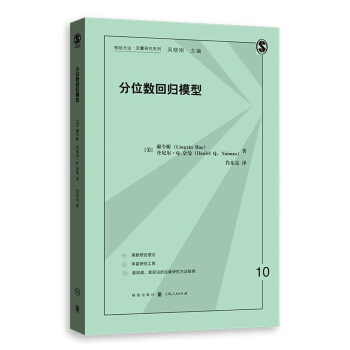


![城市的人和地方:城市、市郊和城镇的社会学 [Urban People and Places:The Sociology of Cities,Suburbs, and Towns] pdf epub mobi 电子书 下载](https://pic.tinynews.org/12182552/5922ce49Nf58331cd.jpg)
